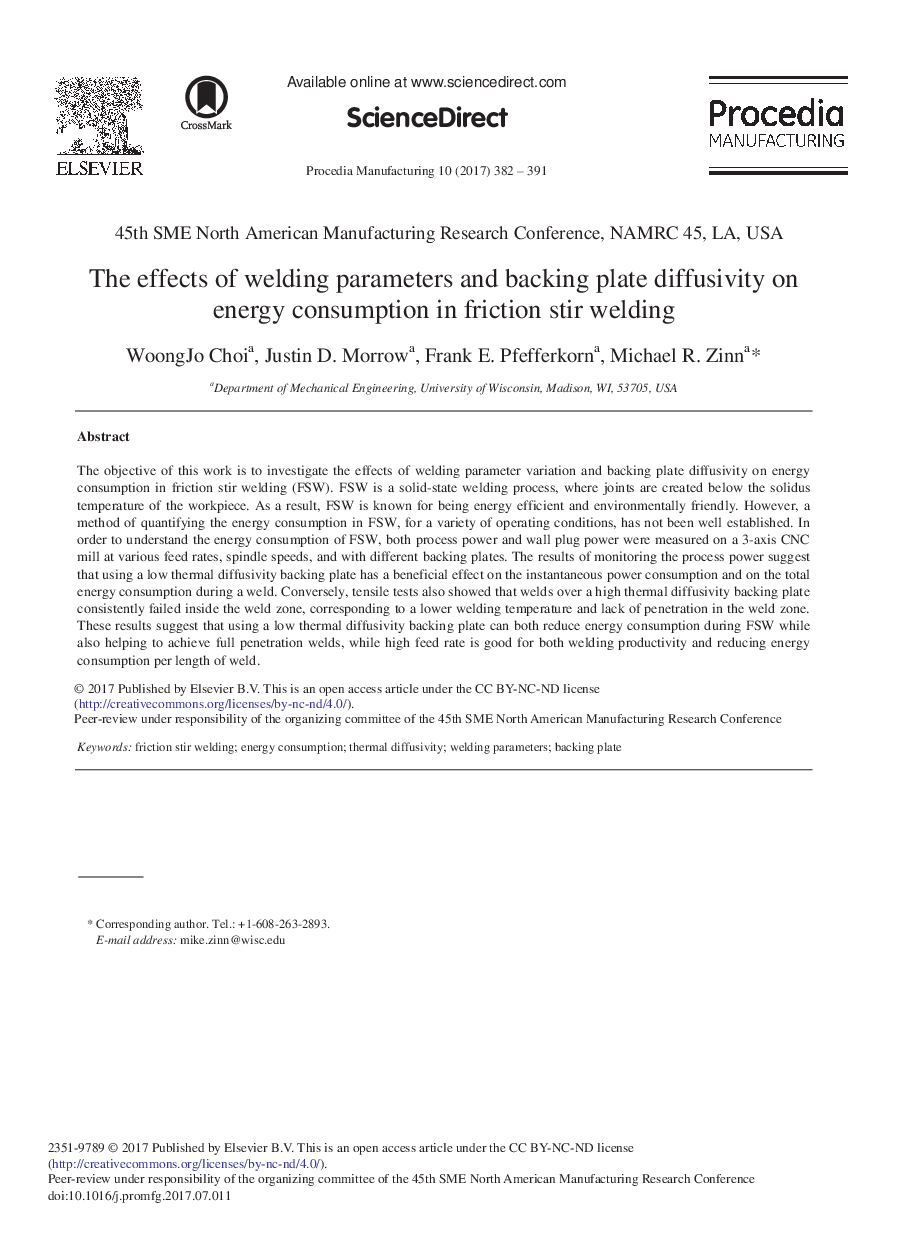| Article ID | Journal | Published Year | Pages | File Type |
|---|---|---|---|---|
| 5128785 | Procedia Manufacturing | 2017 | 10 Pages |
The objective of this work is to investigate the effects of welding parameter variation and backing plate diffusivity on energy consumption in friction stir welding (FSW). FSW is a solid-state welding process, where joints are created below the solidus temperature of the workpiece. As a result, FSW is known for being energy efficient and environmentally friendly. However, a method of quantifying the energy consumption in FSW, for a variety of operating conditions, has not been well established. In order to understand the energy consumption of FSW, both process power and wall plug power were measured on a 3-axis CNC mill at various feed rates, spindle speeds, and with different backing plates. The results of monitoring the process power suggest that using a low thermal diffusivity backing plate has a beneficial effect on the instantaneous power consumption and on the total energy consumption during a weld. Conversely, tensile tests also showed that welds over a high thermal diffusivity backing plate consistently failed inside the weld zone, corresponding to a lower welding temperature and lack of penetration in the weld zone. These results suggest that using a low thermal diffusivity backing plate can both reduce energy consumption during FSW while also helping to achieve full penetration welds, while high feed rate is good for both welding productivity and reducing energy consumption per length of weld.
